
Supercharge your lead generation with a FREE Google Ads audit - no strings attached! See how you can generate more and higher quality leads
Get My Free Google Ads AuditFree consultation

No commitment
Supercharge your lead generation with a FREE LinkedIn Ads audit - no strings attached! See how you can generate more and higher quality leads
Get My Free Google Ads AuditFree consultation

No commitment
Supercharge your lead generation with a FREE Meta Ads audit - no strings attached! See how you can generate more and higher quality leads
Get My Free Google Ads AuditGet My Free LinkedIn Ads AuditGet My Free Meta Ads AuditFree consultation

No commitment
Supercharge your lead generation with a FREE Google Ads audit - no strings attached! See how you can generate more and higher quality leads
Get My Free Google Ads AuditFree consultation

No commitment
In today's complex marketing landscape, effective B2B marketing in the plastic fabrication industry requires a strategic mix of both online and offline channels working in concert. Google Ads plays a critical role by capturing high-intent prospects at the exact moment they're searching for solutions—effectively bridging the gap between broader awareness efforts and your sales process. Often, high-value prospects remain hidden as they navigate your offerings without leaving tangible trails in your CRM. Without modern tools, these potential leads slip by unnoticed, resulting in lost opportunities. By leveraging advanced technology that identifies and targets these prospects directly in Google Ads, businesses can secure their engagement before competitors do. This guide will explore how Google Ads complements existing marketing efforts by targeting precise industry keywords, tracking conversion metrics, and integrating online strategies with offline sales initiatives.

Integrating Google Ads into your digital marketing strategy gives plastic fabrication companies a direct line to decision-makers actively searching for specialized manufacturing solutions. Explore this overview of Google Ads for manufacturing to understand how intent-driven campaigns can efficiently capture qualified leads, maximize visibility, and move beyond broad brand awareness to precise, measurable engagement with high-potential accounts.
A structured approach to Google Ads ensures your campaigns align with the nuanced buying cycles and technical requirements of the plastic fabrication sector. When paired with real-time audience insights and dynamic campaign optimization, this approach helps bridge the gap between online interest and offline project discussions, resulting in more RFQs and improved sales pipeline velocity.
Ready to move from clicks to qualified pipeline? Get started for free with Sona.
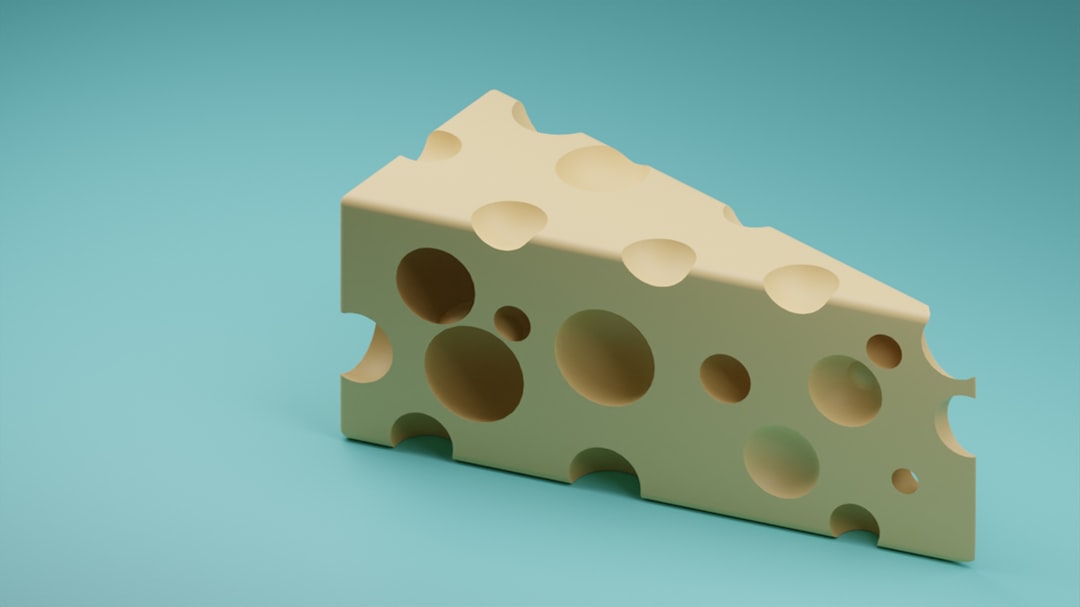
B2B revenue teams in plastic fabrication face an intricate challenge: their ideal buyers are often plant managers, procurement officers, and engineers who research solutions independently before ever reaching out. These decision-makers move rapidly, and their buying signals frequently remain hidden, leading to missed opportunities and slower sales cycles. Google Ads bridges this gap by capturing high-intent prospects at the precise moment they search for specialized services, ensuring marketing efforts reach the right audience when urgency and intent are at their peak.
Timely engagement is crucial in an industry where production deadlines and project needs can shift overnight. When a prospect urgently requires custom plastic components, appearing at the top of search results prevents competitors from capturing the opportunity first. Advanced digital marketing platforms further empower teams to identify anonymous website visitors, matching company-level intent with ad placements that trigger immediate action and follow-up.
Strategic use of Google Ads also unlocks new growth in emerging or underserved markets for plastic fabrication. Targeted ads extend brand reach to buyers who may not be familiar with your capabilities, leveling the playing field against larger industry players. By synchronizing campaigns with CRM and ad platforms, marketers can track engagement across channels, maintain persistent visibility, and drive measurable ROI. This precision ensures that high-value leads are nurtured from first click to final quote, keeping them engaged before they cool off or drift to competitors.

Ready to optimize your campaigns? Get started for free with Sona.
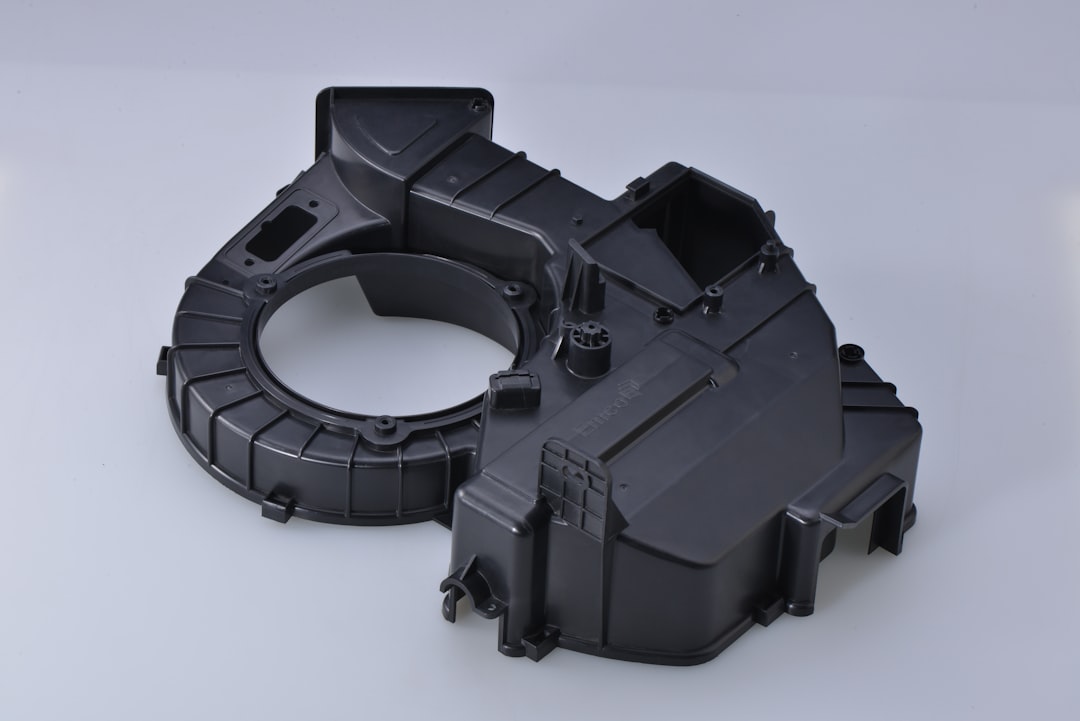
Vertical keyword targeting unlocks precision in reaching decision makers researching specialized plastic fabrication services. By aligning ads with technical search queries such as “custom injection molding for medical devices” or “industrial plastic CNC machining,” manufacturers can capture high-intent demand at the moment buyers are evaluating suppliers. This approach ensures digital marketing for manufacturers produces qualified leads rather than low-value traffic, directly supporting lead generation for plastic fabrication and increasing Google Ads ROI for fabrication.
Conducting competitor gap analysis provides an actionable roadmap to market whitespace. By mapping paid search visibility and ad messaging of rival plastic fabrication companies, marketers can uncover underserved segments, such as niche polymer capabilities or geographic clusters, that competitors overlook. With advanced data enrichment, teams are able to move beyond surface-level impressions and pinpoint which companies are interacting with ads or landing pages but not yet converting—enabling direct engagement and nurturing sequences for those high-value accounts.
Targeting industry-specific placements, such as engineering forums or procurement platforms, expands reach where organic content may lag. Placing display or native ads on sector-relevant sites ensures visibility among technical audiences who are deep in research phases. Integrating company-level engagement insights into this mix elevates performance: marketers can see which businesses are consuming content, adjust budgets toward those showing active buying signals, and sync enriched lists straight into Google Ads or CRM workflows. This streamlines online advertising for manufacturing, focusing spend on audiences most likely to convert.
Retargeting content assets such as whitepapers, technical videos, or case studies increases traction among prior visitors and advances them through the buying journey. By dynamically updating retargeting audiences as prospects interact with different content, teams maintain relevance and maximize conversion rates. Attribution improves when marketers connect both online and offline engagements—such as form fills and sales calls—back to specific campaigns, giving a true measure of cost-per-click in manufacturing and informing future search engine marketing for plastics strategies.
Ready to capture high-value leads and optimize your manufacturing campaigns? Get started for free with Sona.
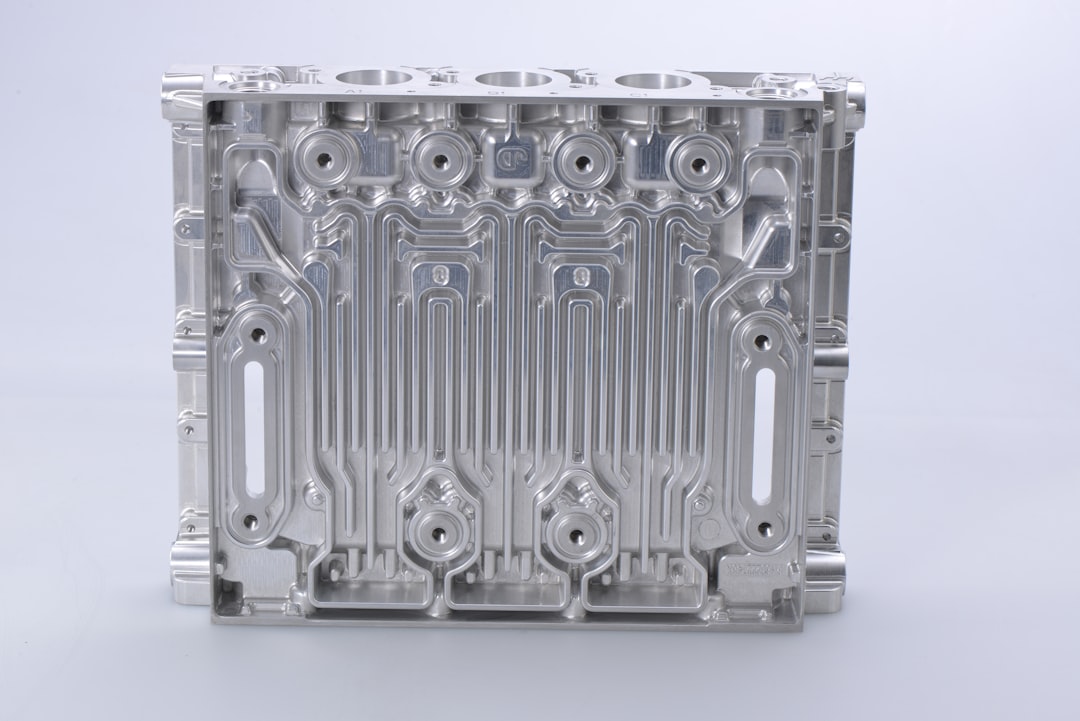
Precision audience segmentation is essential for maximizing the impact of Google Ads for plastic fabrication. Businesses in this sector face diverse buying behaviors, with engineers, procurement officers, and project managers each requiring tailored messaging and engagement tactics. Segmenting effectively ensures every ad dollar goes toward the highest-value prospects, supporting measurable growth and improved lead quality. For an overview of how Google Ads can drive leads and sales for manufacturers, see Google Ads for manufacturing.
Through strategic segmentation, plastic fabrication marketers can elevate their Google Ads ROI, reduce wasted spend, and build a high-impact demand generation engine that addresses the unique complexities of their industry. To see how segmentation can transform your campaigns, get started for free with Sona.
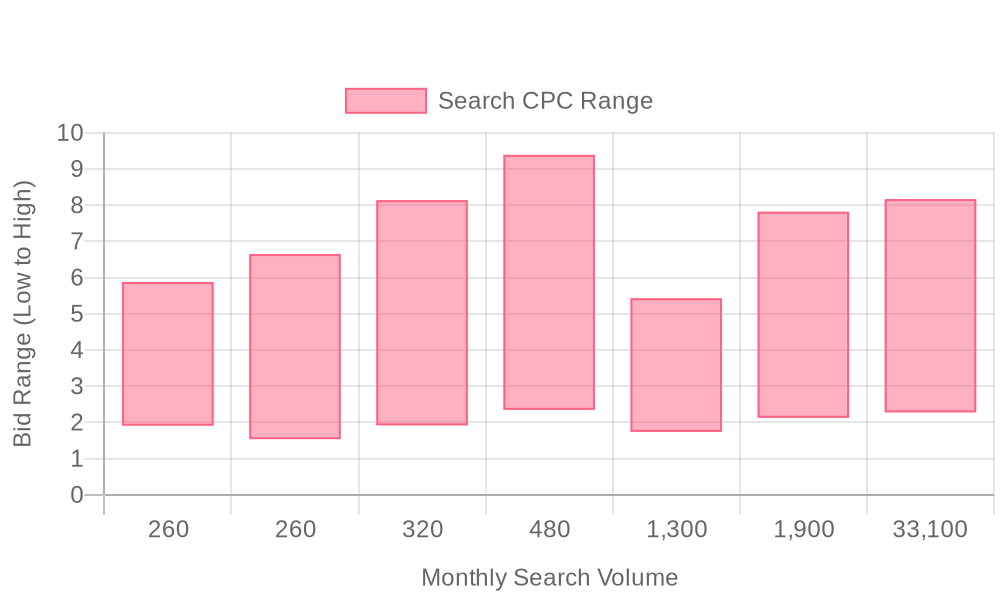
| Industry | Keyword | Monthly Search Volume | Competition Level | Low Bid | High Bid |
| Plastic Fabrication | acrylic manufacturers near me | 260 | MEDIUM | 1.91 | 5.88 |
| Plastic Fabrication | custom plastic fabrication near me | 260 | LOW | 1.54 | 6.65 |
| Plastic Fabrication | acrylic fabrication | 320 | LOW | 1.92 | 8.14 |
| Plastic Fabrication | custom plastic fabrication | 480 | LOW | 2.35 | 9.39 |
| Plastic Fabrication | plastic fabrication near me | 1300 | MEDIUM | 1.74 | 5.43 |
| Plastic Fabrication | plastic fabrication | 1900 | LOW | 2.13 | 7.82 |
| Plastic Fabrication | plastic fabrication company | 33100 | LOW | 2.28 | 8.17 |
A results-focused PPC approach for plastic fabrication businesses begins with a comprehensive keyword strategy tailored to the unique customer journey of buyers in this technical sector. High-volume, high-intent searches such as “plastic fabrication services near me” or “custom plastic parts manufacturer” consistently deliver strong lead generation outcomes because they align directly with buyers who are actively evaluating suppliers. For additional insights on building effective keyword lists in manufacturing, explore this comprehensive guide to industry-specific keywords. These core terms anchor your campaigns, ensuring budget prioritization toward searchers most likely to engage and convert.
Long-tail keyword targeting elevates campaign efficiency by capturing specialized demand often missed by broad match terms. Examples include “custom plastic extrusion solutions,” “FDA approved plastic enclosures,” or “precision CNC plastic machining for aerospace.” These queries reflect deeper purchase intent, typically from engineers or procurement managers with immediate project requirements. By isolating and prioritizing these phrases, marketers can reach high-value accounts that often yield the highest ROI in digital marketing for manufacturers.
Negative keyword implementation is essential to avoid wasted spend and protect campaign performance. Excluding terms like “DIY plastic molding” or “plastic toys” ensures ads are shown only to relevant, qualified audiences, reducing cost-per-click in manufacturing and improving conversion rates. With advanced data platforms, marketers can even analyze real-time intent signals and automatically update exclusions as buyer behaviors shift, keeping campaigns agile and aligned with actual market demand. When keyword lists and exclusions are dynamically informed by enriched CRM and visitor data, targeting precision sharpens, enabling teams to focus on accounts most likely to convert and maximize Google Ads ROI for fabrication. To experience these targeting capabilities, get started for free with Sona.
Precision in keyword selection sets the stage for every successful Google Ads for Plastic Fabrication campaign. Start by clustering keywords according to distinct service offerings, such as “custom injection molding,” “thermoforming services,” or “plastic prototyping.” This approach aligns campaigns with the actual purchasing paths of industrial buyers and enables message customization for each service vertical. Incorporate city and region modifiers to capture high-intent local searches, for example, “plastic fabrication Chicago” or “precision CNC plastics New England.” By segmenting keywords in this way, marketers can efficiently allocate budget toward the most commercially relevant queries.
Real buyer intent often surfaces through nuanced, long-tail keywords that indicate immediate project interest. Utilizing advanced visitor identification platforms, revenue teams can pinpoint which keywords are driving not just traffic, but qualified visits from targeted companies. This insight allows for rapid adjustment of keyword lists as new opportunities emerge, ensuring high-value accounts are consistently prioritized. For further guidance on selecting the right keywords for manufacturing, see this comprehensive keyword strategy guide.
Ad copy for the plastic fabrication industry must immediately address buyers’ technical pain points while establishing trust. Headlines should reference specific challenges, such as “Eliminate Production Delays with Rapid Prototyping” or “ISO-Certified Custom Plastics.” Supporting copy can highlight industry certifications, turnaround times, or guarantees, all of which build confidence among procurement professionals and engineers. Including trust markers such as client logos, compliance standards, and years of experience increases click-through rates and filters out unqualified clicks.
Digital marketers gain an edge by dynamically tailoring ad messaging to reflect a prospect’s stage in the buying journey. As new buying signals appear—such as repeated site visits or engagement with technical resources—ad copy can shift in real time to emphasize solutions most relevant to those accounts. To explore actionable strategies for generating leads in the plastics sector, visit this plastic manufacturing lead generation guide.
Alignment between keywords, ad copy, and the landing page is essential for converting high-value prospects in the plastic fabrication space. Each landing page should reinforce the promise made in the ad, delivering technical detail, process transparency, and clear calls-to-action like “Request a Quote” or “Upload Your CAD File.” Visual content such as equipment videos, material comparison charts, or before-and-after project galleries builds credibility and supports complex purchase decisions. Streamlined forms and instant chat options allow interested visitors to connect directly with engineers or sales teams, reducing friction in the conversion process.
The most effective teams leverage real-time audience data to customize landing page experiences based on visitor company, industry segment, or project type. This ensures that every prospect sees the most relevant technical content, increasing both conversion rates and lead quality. For tailored digital marketing solutions in the plastic molding industry, review this industry-specific digital marketing guide.
Continuous optimization is critical in digital marketing for manufacturers, where sales cycles are complex and every click represents a potential project worth thousands. Employ smart bidding strategies to automatically adjust cost-per-click in manufacturing campaigns, shifting spend toward keywords and audiences that are actively demonstrating in-market behavior. A/B test ad variations, landing page layouts, and calls-to-action to uncover what resonates best with procurement and engineering audiences. These iterative improvements drive up Google Ads ROI for fabrication firms while lowering wasted spend.
Advanced conversion tracking links digital actions to both online and offline outcomes, providing a unified view of revenue impact. By syncing enriched lead and audience data directly into Google Ads and connected CRMs, marketers achieve full-funnel attribution—tying ad engagement to pipeline opportunities and closed deals. For a proven framework to streamline your digital marketing and see results, get started for free with Sona.
Retargeting is critical for staying connected with industrial buyers whose procurement cycles are lengthy and research-driven. By extending retargeting to support educational content, your brand remains present during early research phases, nurturing buyers who have yet to signal readiness but are actively gathering technical information. This approach ensures your expertise is top-of-mind as prospects move from awareness to consideration, particularly when campaign data reveals recurring interest in solution guides or material specifications. With advanced visitor identification, marketers can detect not just anonymous traffic but actual companies showing repeat engagement with high-value resources, allowing for timely follow-up and custom retargeting sequences that reflect real buyer intent.
Segmented audience strategies are essential for manufacturers looking to cross-sell or up-sell based on previous client interactions. By leveraging behavioral data from website activity, content downloads, and past RFQs, you can build dynamic audiences that automatically update as buyers progress through the funnel. For instance, a procurement manager who downloaded a whitepaper on medical-grade polymers may be added to a segment receiving targeted ads for custom cleanroom fabrication capabilities. This segmentation, enriched with real-time buyer intent signals, ensures your cross-sell offers are hyper-relevant, increasing conversion rates and maximizing the impact of your digital marketing efforts.
Strategic partnerships with industry bodies and associations can unlock valuable referral traffic that traditional advertising rarely reaches. When you collaborate with these organizations, your brand content is positioned where industry professionals naturally seek guidance or suppliers, driving qualified leads that are pre-vetted by trusted third parties. Directing these leads into your own audience pools enables further nurturing, and with integrated CRM-ad sync, you can seamlessly move high-value prospects into targeted Google Ads campaigns or personalized email sequences, ensuring no opportunity goes untapped. If you want to streamline these processes, get started for free with Sona.
Utilizing search data to inform your content marketing strategy closes the loop between demand and supply. By analyzing the high-intent actions users take—such as repeated searches for "precision thermoforming" or "FDA-compliant plastic fabrication"—you can extend your content library to address these needs directly. This data-driven approach attracts new prospects while also feeding fresh material into retargeting campaigns for existing audiences. Real-time intent signals help shift budget and resources toward the topics and services most likely to generate immediate engagement and measurable ROI, powering smarter online advertising for manufacturing and elevating Google Ads for manufacturing companies.
In conclusion, utilizing Google Ads for plastic fabrication services can significantly enhance your visibility and generate valuable leads in a competitive market. By strategically crafting your campaigns, targeting the right audience, and continuously optimizing your ads, you can effectively promote your services and stand out among competitors.
Throughout this article, we've addressed the challenges of reaching a niche audience, discussed the importance of precise targeting, and offered actionable solutions for optimizing your ad spend. By employing these strategies, you can maximize your return on investment and drive meaningful engagement with potential clients seeking plastic fabrication services.
The opportunity to transform your digital advertising efforts is within reach. By leveraging these insights and tools, you can position your business for growth, capturing the attention of those who matter most. Take the first step toward a more effective advertising strategy and see the difference it can make for your business.
To experience powerful tools that can elevate your marketing efforts, start for free and discover how our platform can support your journey to achieving greater visibility and success.
Best practices include developing a structured approach to integrate Google Ads with a broader marketing strategy, focusing on industry-specific keywords and audience targeting, aligning landing pages with ad messaging for conversions, continuously optimizing campaign performance, and integrating with other channels for a cohesive strategy.
Google Ads can improve lead generation by capturing high-intent prospects at the exact moment they search for solutions, using precise industry keywords, tracking conversion metrics, and integrating online strategies with offline sales initiatives to efficiently capture qualified leads.
The budget should be allocated based on targeting high-intent keywords and audiences, prioritizing accounts demonstrating in-market behavior, and using data-driven optimizations to shift spend toward segments and campaigns that deliver the best ROI.
Target industry-specific keywords such as 'custom plastic enclosures,' 'precision injection molding,' and 'ISO-certified plastic fabrication' to attract engineers and procurement managers evaluating suppliers, and use long-tail keywords to capture specialized demand.
Success is measured by tracking conversion metrics, connecting website actions with offline sales discussions through advanced attribution, and analyzing campaign performance to identify which keywords, ads, and audiences deliver the best ROI.

In today's complex marketing landscape, effective B2B marketing in the plastic fabrication industry requires a strategic mix of both online and offline channels working in concert. Google Ads plays a critical role by capturing high-intent prospects at the exact moment they're searching for solutions—effectively bridging the gap between broader awareness efforts and your sales process. Often, high-value prospects remain hidden as they navigate your offerings without leaving tangible trails in your CRM. Without modern tools, these potential leads slip by unnoticed, resulting in lost opportunities. By leveraging advanced technology that identifies and targets these prospects directly in Google Ads, businesses can secure their engagement before competitors do. This guide will explore how Google Ads complements existing marketing efforts by targeting precise industry keywords, tracking conversion metrics, and integrating online strategies with offline sales initiatives.
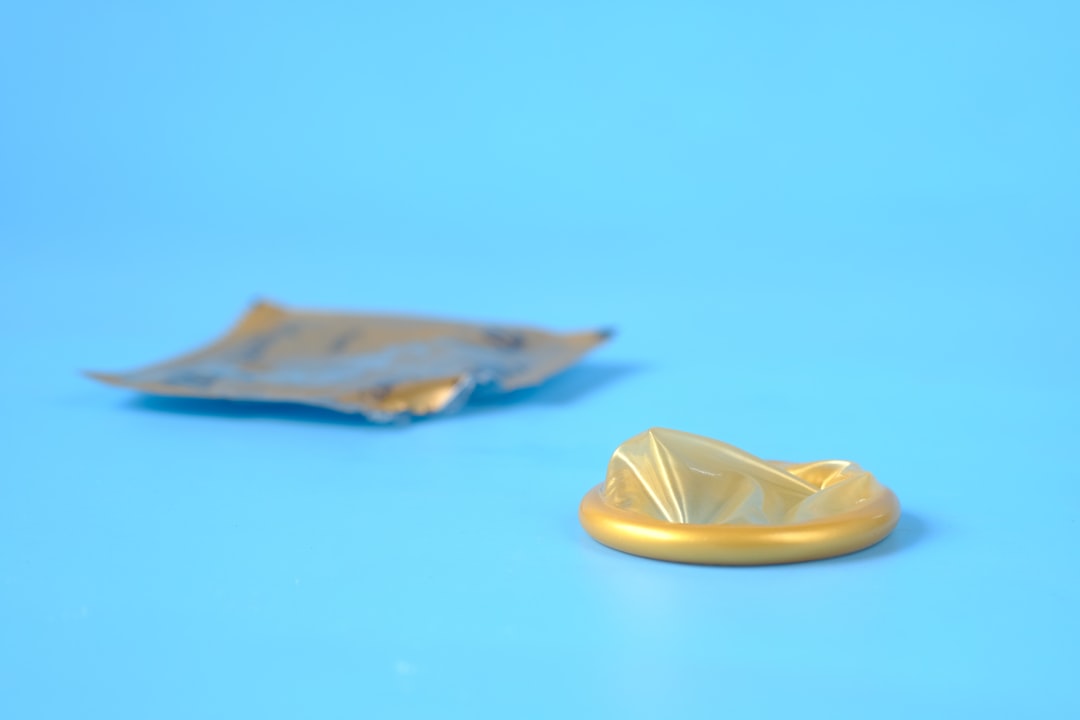
A robust Google Ads strategy enables plastic fabrication companies to engage high-value prospects exactly when they are searching for solutions. Precision targeting, informed by deep industry knowledge and behavioral data, delivers messaging that resonates with procurement teams, project engineers, and industrial buyers at pivotal decision points. For more practical tips, see this guide on Google Ads for manufacturing, which outlines how to generate leads and boost sales through targeted campaigns.
Integrating Google Ads into your broader digital marketing for manufacturers multiplies the effect of your outreach. It empowers teams to connect first-party intent signals, identify in-market prospects, and convert anonymous website visitors into actionable sales opportunities. Unifying these insights allows for agile adjustments, ensuring your campaigns capture high-intent accounts and accelerate deal cycles.
A structured lead generation strategy for plastic fabrication starts with developing targeted keyword lists and advanced audience segmentation. This ensures your ads appear only before stakeholders who are actively evaluating custom fabrication, material sourcing, or production partnerships. For more in-depth strategies, explore our account-based marketing playbooks designed for complex B2B sales cycles.
Optimizing landing pages is crucial for converting engaged visitors into leads, especially since many technical buyers prefer to evaluate content before initiating contact. High-performing landing pages integrate clear calls-to-action, downloadable specification sheets, and direct links to technical support, all mapped to the user's journey stage. When conversion tracking is seamlessly integrated, marketers gain full visibility into which campaigns and channels drive the most revenue.
Continuous performance optimization is essential for improving Google Ads ROI for fabrication services. Audience segmentation and behavioral analysis reveal which segments demonstrate the strongest buying signals, allowing you to reallocate spend to the most promising accounts in real time. Integrating these insights with your CRM and other sales platforms enables synchronized follow-up, quick response to in-market leads, and the delivery of personalized nurture sequences.
Finally, a cohesive marketing strategy combines targeted ads for the plastic industry with remarketing and multi-channel touchpoints. This approach ensures your brand remains top-of-mind through long sales cycles, while real-time audience updates reflect each account’s progress through the funnel. Timely, relevant follow-up closes the loop on lead generation for plastic fabrication and positions your team to consistently outperform competitors in the digital space. Ready to capture more leads? Get started for free with Sona.
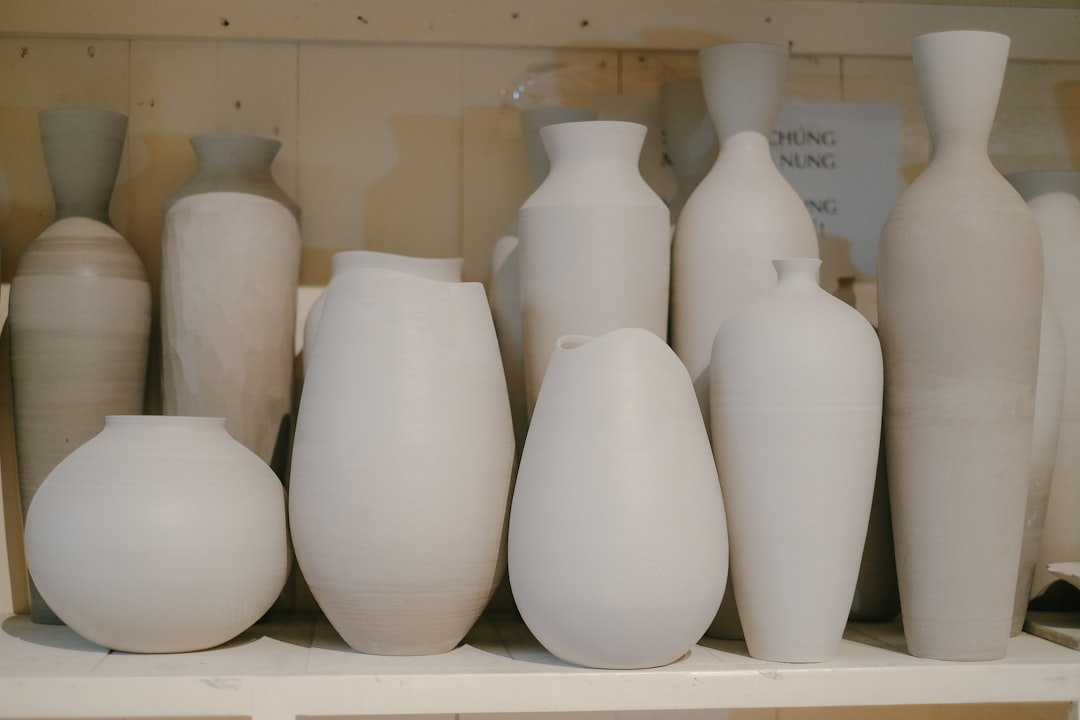
Google Ads provides plastic fabrication companies with a unique ability to engage their specialized audience at the exact moment of intent. This precision ensures decision-makers such as plant managers and design engineers see relevant offers when they are actively searching for solutions, not after their need has passed. By intercepting these high-value prospects during their independent research, manufacturers avoid the common pitfall of letting hot opportunities slip by unnoticed—see how a plastics manufacturer quickly achieved ROI with digital strategies.
In urgent project scenarios, the platform’s demand response speed becomes a competitive advantage. Google Ads enables teams to pivot campaigns and budgets instantly, allowing fabricators to respond to shifts in production timelines or sudden RFQ surges before competitors gain traction. Strategic targeting further boosts visibility in emerging markets where traditional outreach methods rarely penetrate, accelerating expansion into new verticals or geographic corridors. For more insights on optimizing your approach, explore our library of actionable playbooks.
The measurable nature of Google Ads complements other digital marketing for manufacturers, seamlessly integrating with account-based programs, social campaigns, and outbound efforts. With advanced tools, marketers can illuminate previously anonymous website visits, pinpointing which companies are evaluating services and triggering tailored outreach before interest wanes using Sona. The result is a unified demand generation engine where audience data, intent signals, and campaign performance continually inform each other, ensuring every marketing dollar is invested where it drives the greatest ROI for plastic fabrication.

Ready to put these campaign types into action? Get started for free with Sona.
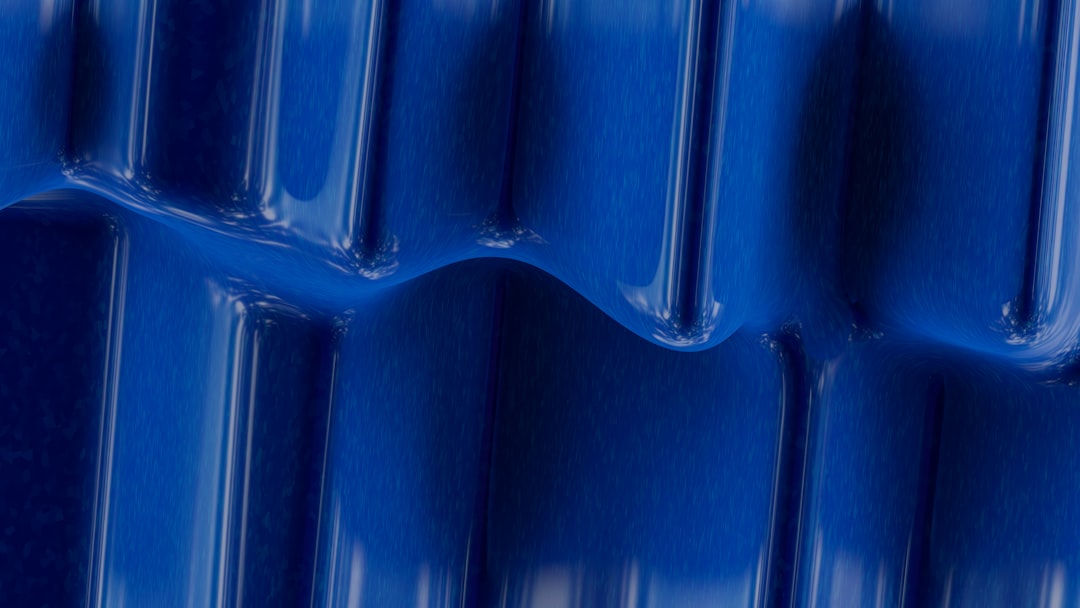
Growth in the plastic fabrication sector depends on more than simply increasing ad spend. High-value opportunities are created by aligning digital marketing with actual buying intent and focusing on segments that demonstrate measurable demand for specialized services. With Sona’s intent signals, you can identify and prioritize prospects who display real-time buying interest, ensuring your marketing efforts target accounts most likely to convert.
Ready to uncover and act on your best growth opportunities? Get started for free with Sona.
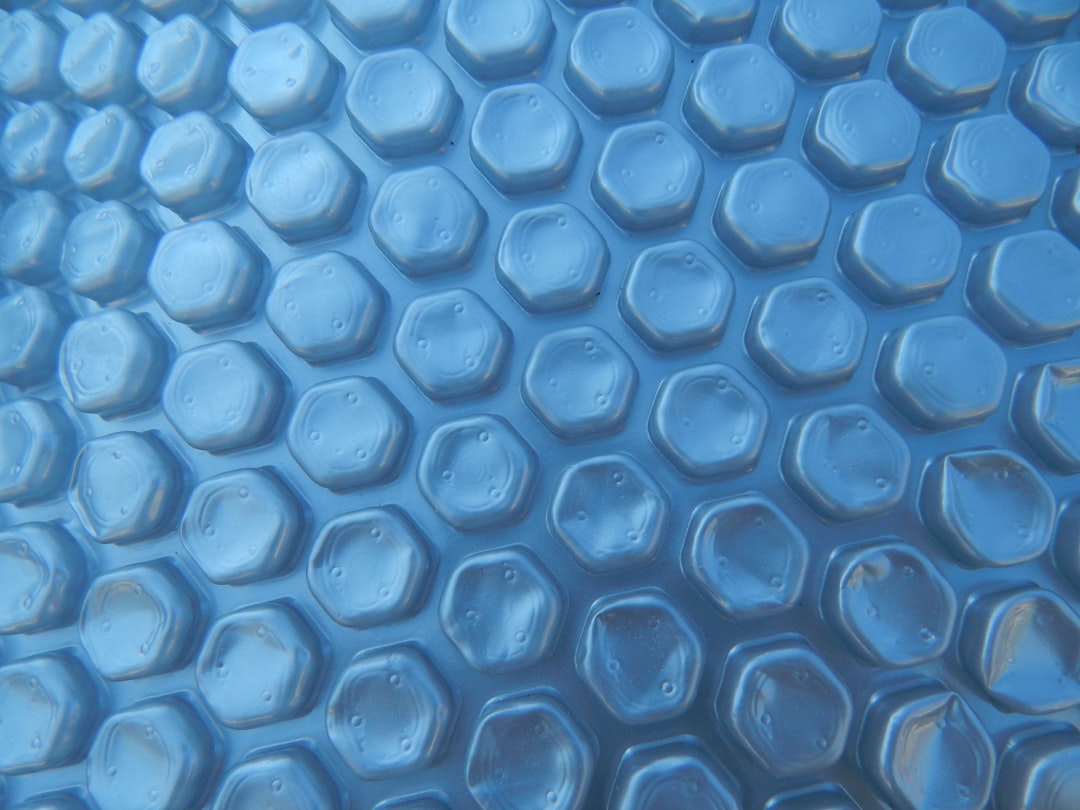
Audience segmentation is essential for plastic fabrication companies competing in a results-driven, B2B landscape. Precision targeting allows teams to allocate budgets and messaging where they will have the greatest impact, eliminating wasted spend and ensuring each campaign speaks directly to the needs of distinct buyer groups. By segmenting audiences according to real purchasing behavior and technical requirements, revenue teams cultivate higher-quality leads and significantly improve conversion rates.
Ready to put segmentation to work? Get started for free with Sona.
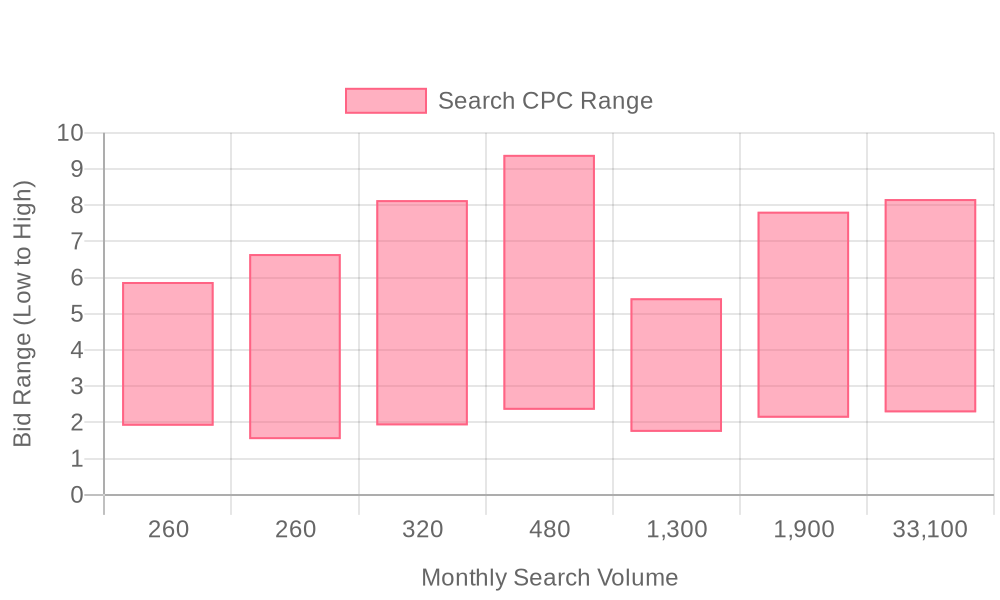
| Industry | Keyword | Monthly Search Volume | Competition Level | Low Bid | High Bid |
| Plastic Fabrication | acrylic manufacturers near me | 260 | MEDIUM | 1.91 | 5.88 |
| Plastic Fabrication | custom plastic fabrication near me | 260 | LOW | 1.54 | 6.65 |
| Plastic Fabrication | acrylic fabrication | 320 | LOW | 1.92 | 8.14 |
| Plastic Fabrication | custom plastic fabrication | 480 | LOW | 2.35 | 9.39 |
| Plastic Fabrication | plastic fabrication near me | 1300 | MEDIUM | 1.74 | 5.43 |
| Plastic Fabrication | plastic fabrication | 1900 | LOW | 2.13 | 7.82 |
| Plastic Fabrication | plastic fabrication company | 33100 | LOW | 2.28 | 8.17 |
A precise keyword strategy forms the foundation of high-performing Google Ads for Plastic Fabrication. To maximize lead generation and minimize wasted spend, focus on high-volume, high-intent searches that align with core services and buyer needs. Prioritize terms such as “plastic fabrication services near me,” “custom plastic extrusion solutions,” and “industrial plastics manufacturer,” as these phrases capture commercial searchers who are actively evaluating suppliers. For a comprehensive look at how PPC drives qualified leads for manufacturing, see this PPC for manufacturers guide.
Long-tail keywords play a crucial role for PPC in the plastic fabrication industry, often surfacing highly qualified leads with specific project requirements. Examples include “custom polycarbonate machining for medical devices,” “clear acrylic sheet fabrication for retail displays,” and “precision CNC plastic cutting services.” These granular terms filter out generic traffic and connect your ads directly to technical buyers who already know what they need, boosting both relevance and conversion rates. Using real-time audience tools, marketers can continuously monitor search trends, adjusting bids and budgets in real time as new niche queries emerge or buyer intent shifts within the manufacturing sector.
Negative keyword management is equally essential. By excluding phrases such as “DIY plastic projects,” “plastic repair kits,” or “plastic recycling,” you prevent budget drain from unqualified searches and optimize your ad delivery toward high-value commercial opportunities. This approach not only improves cost-per-click in manufacturing but also raises Google Ads ROI for fabrication by focusing resources on the most promising prospects. With advanced visitor identification, marketers can further refine negative keyword lists, pinpointing and excluding non-converting segments or irrelevant use cases that surface in search query reports.
Audience insights and keyword data should be dynamically synchronized across your CRM and ad platforms, ensuring that every update in account status or sales cycle stage translates to smarter bidding and sharper audience targeting. This level of CRM integration streamlines digital marketing for manufacturers, allowing for real-time audience expansion, suppression of closed deals, and the seamless delivery of targeted ads for the plastic industry across channels. As a result, your search engine marketing for plastics becomes more agile and efficient, unlocking new pathways to growth in a competitive market. Ready to put these strategies into action? Get started for free with Sona.
Effective Google Ads for Plastic Fabrication begin with laser-focused keyword research. Clustering keywords by service type—such as CNC machining, thermoforming, injection molding, or custom plastic parts—ensures campaigns reflect the precise solutions your prospects seek. Adding city or region modifiers captures local demand and improves relevancy, which is especially important for fabricators serving specific industrial hubs or compliance zones. This strategy delivers higher intent traffic, minimizes wasted clicks, and positions your business as the go-to provider for both standardized and highly specialized plastic fabrication needs.
With modern data unification tools, marketers now move beyond anonymous impressions and gain clear visibility into which companies and decision-makers are engaging with specific keywords. By identifying high-value accounts actually landing on your site, you can prioritize ad spend and adjust keyword targeting in real time, ensuring that every dollar is invested toward the prospects most likely to convert. This level of precise audience insight gives B2B revenue teams a competitive edge in search engine marketing for plastics.
Ad copy in the plastic fabrication industry must address the direct pain points of technical buyers—such as lead times, material certifications, and tight tolerances—while instantly establishing credibility. Headlines like "Custom CNC Plastic Parts Delivered in 5 Days" or "ISO 9001-Certified Plastic Fabrication" capture urgent buyer needs and reinforce trust. Incorporating proof points, such as compliance badges or case study mentions, helps differentiate your business and builds confidence among engineering and procurement stakeholders.
When you connect ad copy to real-time behavioral data, you can adapt messaging on the fly. For example, if site visitors from aerospace firms show increased engagement on your flame-retardant polycarbonate pages, your ad headlines and sitelinks can dynamically reference aerospace compliance and rapid prototyping. This approach ensures every impression is tailored to the prospect’s stage in the buying journey, maximizing engagement and minimizing wasted spend in PPC for plastic fabrication.
High-converting landing pages for plastic fabrication must deliver technical clarity and a seamless user experience. Each landing page should closely align with the targeted keyword and ad message, featuring detailed specs, process capabilities, and visual proof of expertise (such as CAD images or quality certifications). Prominent calls-to-action—like "Request a Quote," "Upload Your Drawing," or "Book a Technical Consultation"—guide the most interested prospects toward conversion, reducing friction for time-strapped engineers and buyers.
With advanced conversion tracking and attribution, you can measure which landing page elements drive the highest lead quality and adjust content quickly. Integrating online form submissions and offline sales outcomes provides a full-funnel view of campaign effectiveness, ensuring you continually refine messaging and CTAs to optimize both the volume and value of generated leads. If you want to see how this works in practice, get started for free with Sona.
Continuous optimization is essential for maintaining performance in online advertising for manufacturing. Smart bidding strategies, such as target cost-per-acquisition or automated ROAS bidding, leverage historical data and in-market signals to allocate budget where it drives the best results. A/B testing of headlines, descriptions, and landing page layouts further refines campaign efficiency, allowing you to identify which creative elements resonate most with technical audiences.
Dynamic audience management enhances these efforts by automatically updating retargeting lists and lookalike audiences as leads progress through the sales funnel. When enriched CRM data syncs with your ads platform, you can exclude closed deals, re-engage high-potential opportunities, and personalize messaging based on account status. This unified approach ensures campaigns remain agile, relevant, and tightly aligned with revenue goals, driving measurable improvements in both pipeline velocity and overall cost-per-click in manufacturing.
Expanding your presence in the plastic fabrication industry requires a precise blend of digital marketing tactics that capture attention, nurture engagement, and convert opportunities into revenue. By leveraging smart segmentation and targeted content strategies, your business can consistently appear in front of decision-makers when they are ready to act.
Ready to take your plastic fabrication marketing to the next level? Get started for free with Sona.
Harnessing the power of Google Ads for plastic fabrication can be your game-changer in navigating the competitive landscape of this industry. As we've explored, the key lies in crafting targeted ad campaigns that not only enhance your visibility but also drive meaningful leads to your business. From understanding keyword strategies to optimizing ad spend, the journey to efficient ad utilization is both strategic and rewarding.
Turning challenges into opportunities, effective Google Ads campaigns require a thorough understanding of your audience and the competitive environment. By focusing on precise targeting, leveraging data insights, and continuously refining your approach, you can elevate your plastic fabrication services to new heights. Embracing these strategies ensures that your marketing efforts are not just visible but impactful.
Imagine the transformation that awaits as you implement these insights. With the right tools and knowledge at your disposal, you can revolutionize how your services are perceived and sought after. The potential for growth and success is limitless when you align your advertising strategies with your business objectives.
Ready to take the next step? Start for free to experience our platform and its capabilities today. Discover how unified data insights can drive your business forward and unlock new avenues for growth in the world of plastic fabrication.
Best practices include targeting precise industry keywords, integrating online strategies with offline sales, optimizing landing pages with clear calls-to-action, and continuously optimizing campaigns through audience segmentation and performance analysis.
Google Ads improves lead generation by capturing high-intent prospects through precision targeting, leveraging first-party intent signals to convert anonymous visitors, and integrating with CRM systems for synchronized follow-up and personalized nurture sequences.
The budget should be allocated towards high-intent keywords and audience segments that demonstrate the strongest buying signals, allowing for real-time adjustments to maximize ROI and efficiently capture demand.
Target high-volume, high-intent keywords such as 'plastic fabrication services near me,' 'custom plastic extrusion solutions,' and long-tail keywords like 'custom polycarbonate machining for medical devices' to connect with technical buyers.
Success is measured by tracking conversion metrics, integrating conversion tracking with CRM systems, continuously optimizing based on audience segmentation, and aligning with real-time audience data to ensure every marketing dollar is effectively invested.
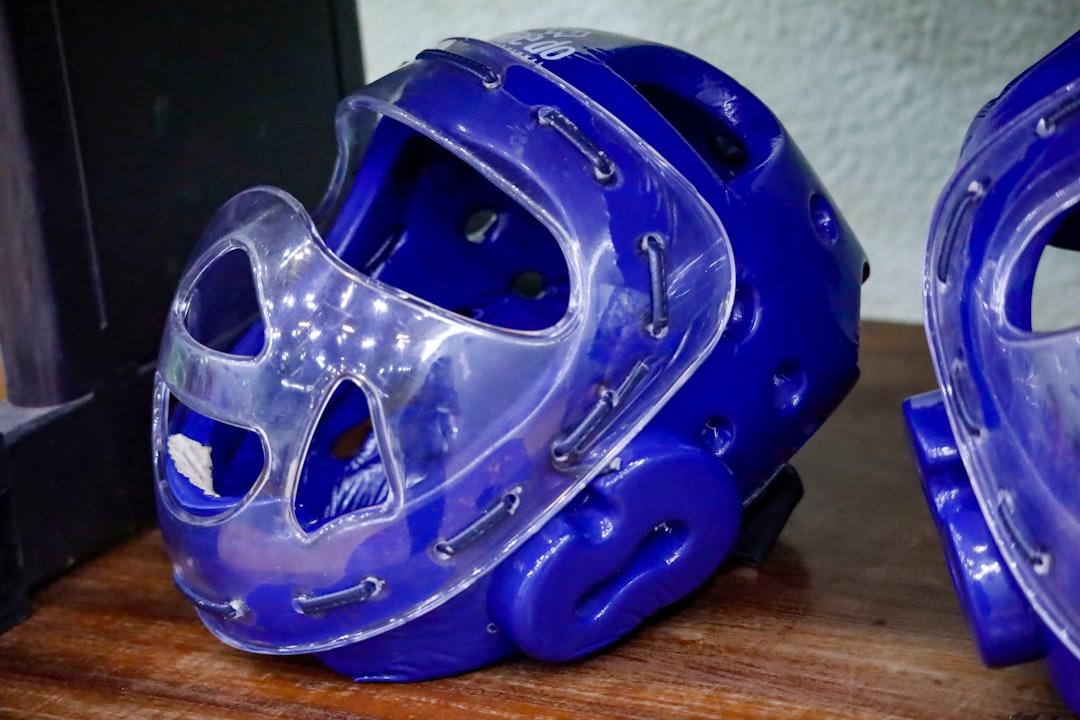
In today's complex marketing landscape, effective B2B marketing in the plastic fabrication industry requires a strategic mix of both online and offline channels working in concert. Google Ads plays a critical role by capturing high-intent prospects at the exact moment they're searching for solutions—effectively bridging the gap between broader awareness efforts and your sales process. Often, high-value prospects remain hidden as they navigate your offerings without leaving tangible trails in your CRM. Without modern tools, these potential leads slip by unnoticed, resulting in lost opportunities. By leveraging advanced technology that identifies and targets these prospects directly in Google Ads, businesses can secure their engagement before competitors do. This guide will explore how Google Ads complements existing marketing efforts by targeting precise industry keywords, tracking conversion metrics, and integrating online strategies with offline sales initiatives.
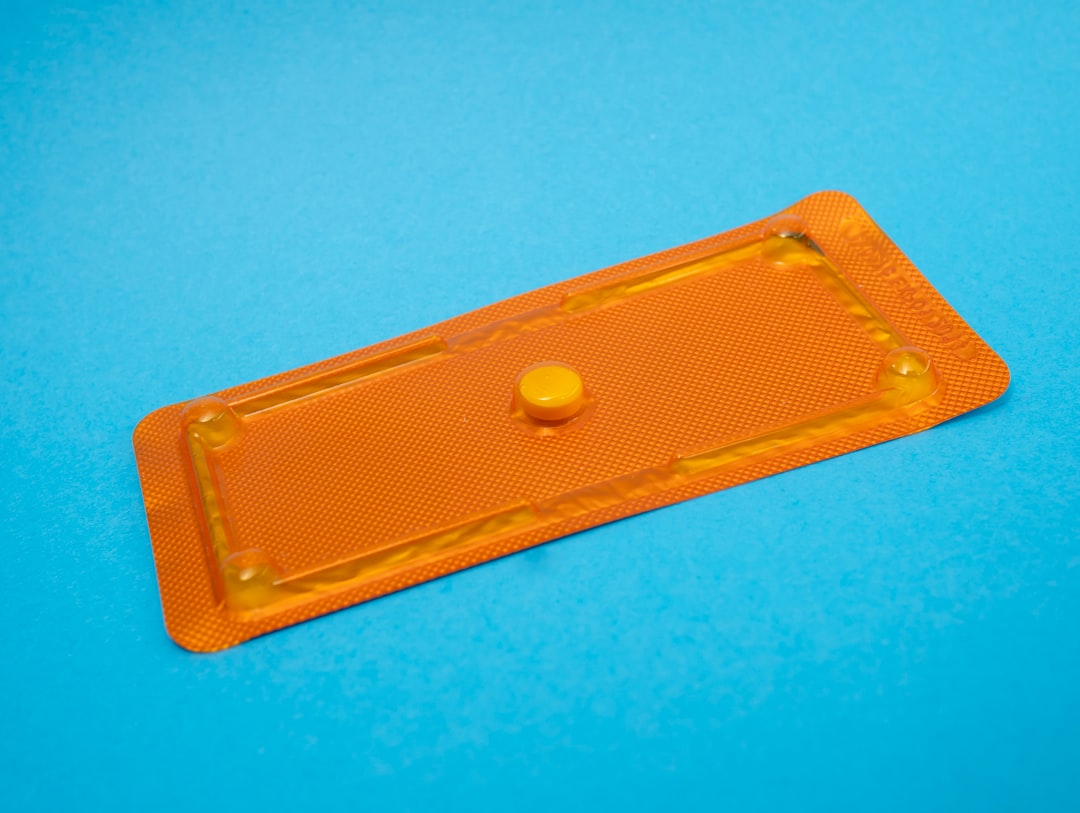
For B2B teams in the plastic fabrication sector, generating quality leads requires a disciplined digital strategy that uncovers real buying intent and accelerates deal cycles. Google Ads stands out as a direct channel to reach engineers, procurement managers, and decision-makers when they are actively searching for custom manufacturing solutions. By leveraging advanced targeting and seamless audience integration, you can ensure that your ads appear in front of high-value prospects who fit your ideal customer profile.
Integrating Google Ads into your broader marketing mix empowers revenue teams to synchronize campaigns with CRM insights, deliver relevant messaging, and capture demand across every touchpoint. This guide breaks down a step-by-step framework to pinpoint high-converting keywords, build dynamic audiences, and drive measurable ROI for plastic fabrication. When executed with discipline and data, digital advertising for manufacturers moves beyond basic lead capture to deliver actionable insights, nurture relationships, and maximize conversion value.
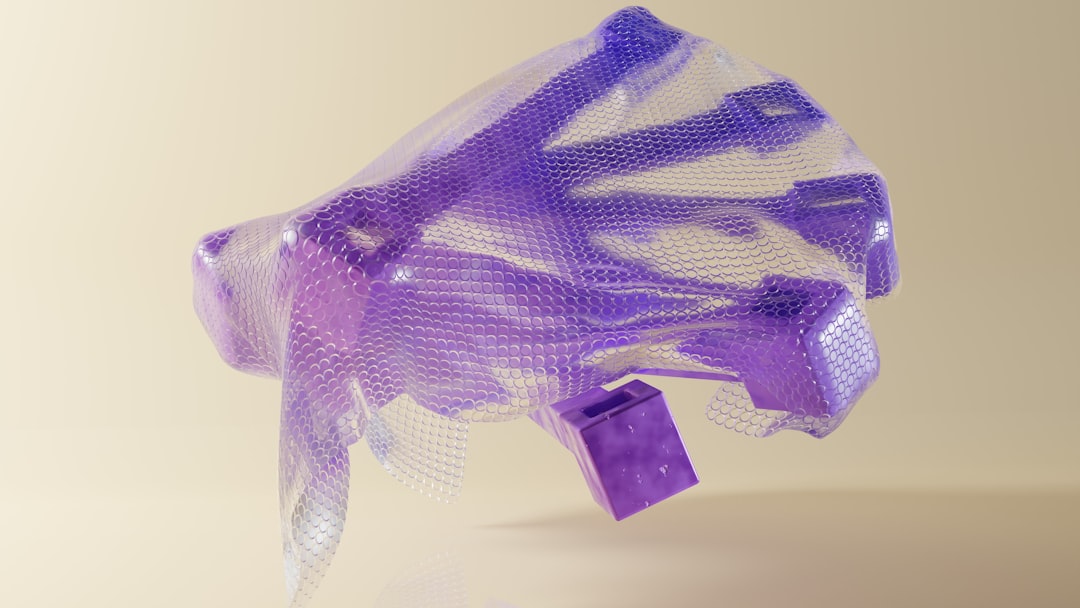
Plastic fabrication companies operate in a market where buyers often conduct independent, technical research before reaching out. Capturing attention during this critical decision-making window is essential, as plant managers and engineers expect immediate, relevant answers when searching for suppliers or new solutions. Advanced digital marketing strategies, like Google Ads, empower fabricators to place their services directly in front of these decision-makers at the exact moment of intent, ensuring that valuable opportunities are not lost to competitors. For tailored insights on SEO strategies that increase online visibility and qualified leads, explore this SEO guide for plastics manufacturers. You can also find additional B2B marketing tips in our blog articles.
In urgent project scenarios, such as last-minute prototyping or emergency production runs, Google Ads enables plastic fabricators to respond to real-time demand with surgical precision. Targeted campaigns ensure your offering is visible right when prospects are ready to act, often before they engage with any other provider. This speed-to-market approach helps prevent delays in lead response and keeps your brand top-of-mind in high-pressure buying cycles. Learn how Sona identification reveals which companies are visiting your website and triggers timely sales or marketing actions for immediate follow-up.
Strategic targeting through Google Ads also unlocks new growth in emerging or underserved geographic and vertical markets. Fabricators can reach niche segments—such as medical device manufacturers or automotive engineers—by tailoring ads to specific capabilities and regions, resulting in higher-quality leads and measurable growth. The ability to track engagement and attribute every lead or quote request means marketing investments are directly tied to revenue, optimizing spend and accelerating return on investment.
Integrating advanced tools into this process elevates the impact of Google Ads even further. Instead of relying on anonymous website visits, marketers can identify which companies are researching particular fabrication methods or materials using Sona. This intelligence informs campaign adjustments in real time, reallocating budget toward high-intent prospects and ensuring follow-up is immediate and relevant. By connecting CRM and ad platforms, audiences and leads are dynamically updated as they progress through the funnel, streamlining demand generation for the entire revenue team.
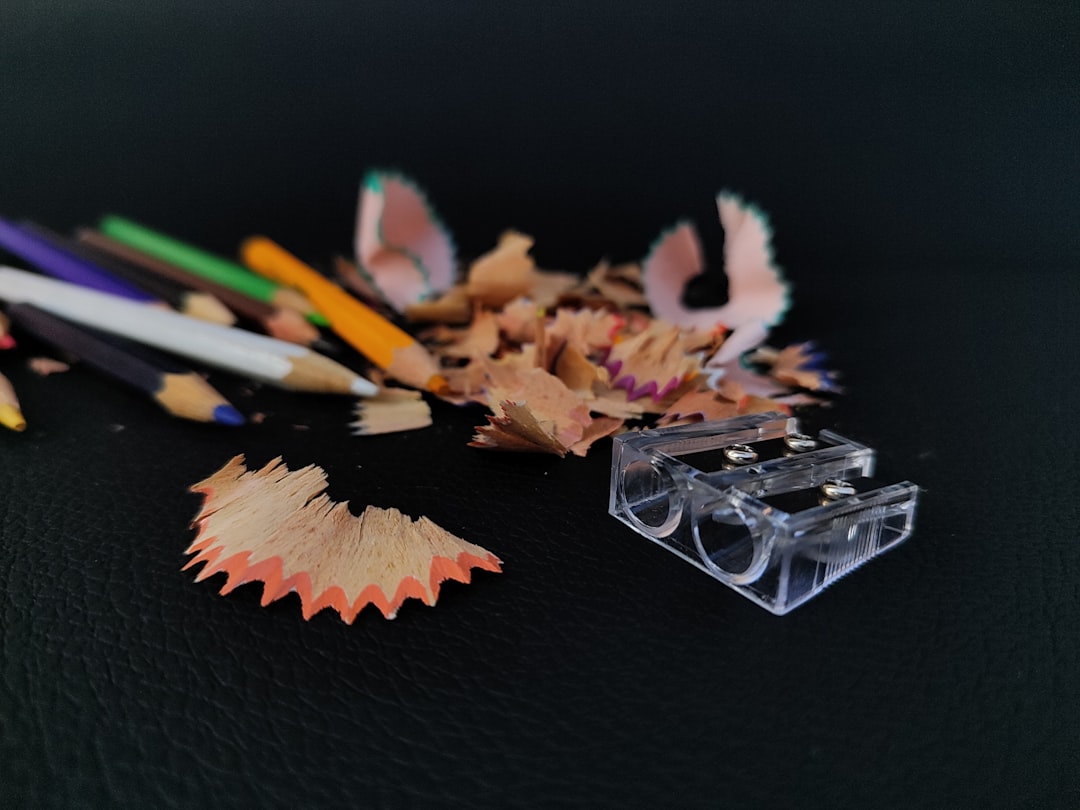
Ready to capture more qualified leads? Get started for free with Sona.
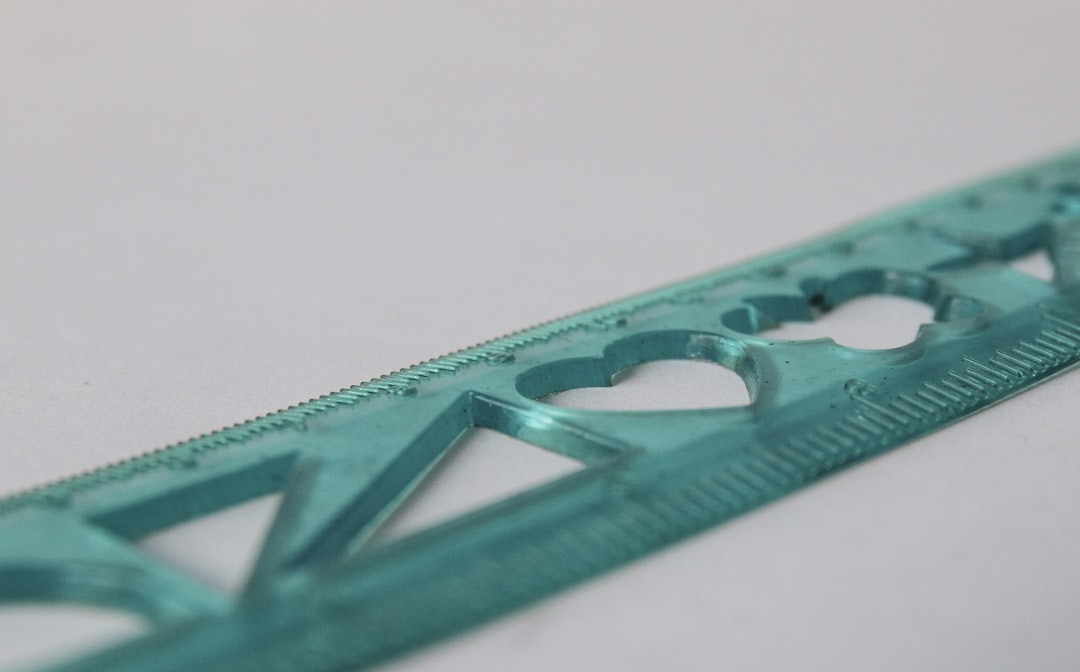
Plastic fabrication companies operating in a competitive B2B landscape benefit most by identifying and capturing growth opportunities that directly align with specialized demand. Vertical keyword targeting plays a critical role here: by focusing on industry-specific phrases like “medical-grade plastic machining” or “custom acrylic enclosure fabrication,” you ensure your visibility when high-value buyers conduct project research. This precise approach prioritizes intent-rich queries, helping you attract leads who are further along in their decision-making process and more likely to convert. For a deeper look at SEO and demand strategies tailored to the plastics sector, explore SEO strategies for plastics manufacturers and review actionable B2B marketing insights.
Building on this, a competitor gap analysis is essential for surfacing underserved segments. By analyzing which keywords, placements, or buyer personas competitors overlook, you can fill those gaps and intercept interactions they miss. This tactic not only expands your reach but also uncovers new verticals, such as prototyping for the aerospace market or food-grade fabrication, where organic presence alone may be limited. Marketers leveraging company and visitor identification gain a sharper edge by pinpointing which companies are visiting their site and detecting real-time signals of in-market behavior, allowing budget to be shifted to the highest-converting audiences without delay.
Industry-specific placements offer another avenue, especially in areas where organic content faces distribution challenges. Advertising on trade publications, industry forums, or technical resource hubs lets you present your solutions where procurement teams and engineers actively search for suppliers. With real-time audience insights, you can identify which organizations interact with your ads or gated resources, then refine your outreach to focus on accounts showing purchase intent. This strategy transforms anonymous web traffic into named, actionable opportunities synced directly to your CRM and Google Ads audiences for seamless follow-up.
To maximize the return on content investments, retargeting plays a pivotal role. By retargeting visitors who engaged with whitepapers, case studies, or technical videos, you nurture prior interest and boost content traction among highly qualified prospects. For manufacturers, a comprehensive PPC guide details best practices that can amplify these efforts, while advanced attribution tools help you measure the true ROI of your content strategy and optimize spend for lead generation in plastic fabrication. This holistic approach empowers manufacturing marketers to uncover, act on, and expand their most valuable growth opportunities in the plastic industry.
Ready to accelerate your growth in the plastics market? Get started for free with Sona.
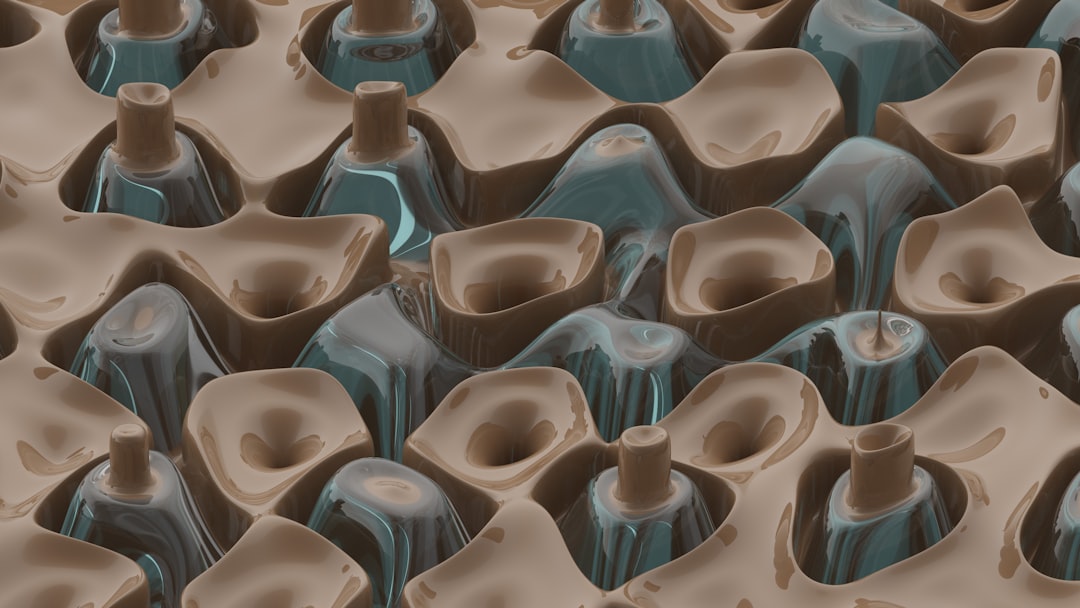
Audience segmentation is critical for plastic fabrication firms seeking to maximize Google Ads performance and drive high-value lead generation. By dividing audiences into precise customer types, marketers can tailor messaging and resource allocation, ensuring that each campaign speaks directly to the needs and priorities of its intended segment. This approach unlocks new efficiencies and elevates engagement rates, especially in a niche where technical requirements and buyer profiles vary considerably. For more strategies on segmenting and targeting high-value accounts, review the essential guide to account identification.
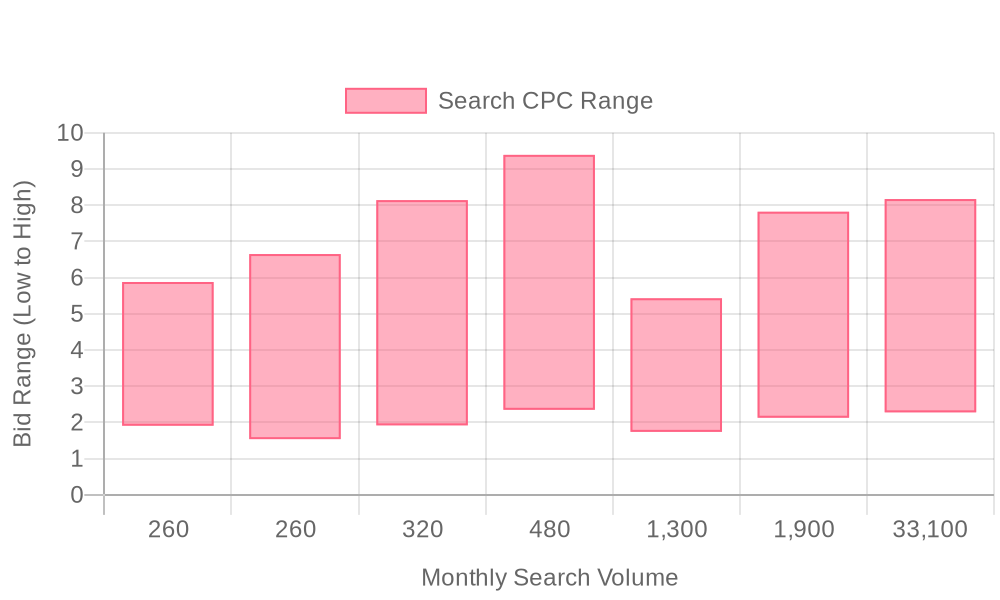
| Industry | Keyword | Monthly Search Volume | Competition Level | Low Bid | High Bid |
| Plastic Fabrication | acrylic manufacturers near me | 260 | MEDIUM | 1.91 | 5.88 |
| Plastic Fabrication | custom plastic fabrication near me | 260 | LOW | 1.54 | 6.65 |
| Plastic Fabrication | acrylic fabrication | 320 | LOW | 1.92 | 8.14 |
| Plastic Fabrication | custom plastic fabrication | 480 | LOW | 2.35 | 9.39 |
| Plastic Fabrication | plastic fabrication near me | 1300 | MEDIUM | 1.74 | 5.43 |
| Plastic Fabrication | plastic fabrication | 1900 | LOW | 2.13 | 7.82 |
| Plastic Fabrication | plastic fabrication company | 33100 | LOW | 2.28 | 8.17 |
Success in digital marketing for plastic fabrication begins with precise keyword targeting. High-performing PPC campaigns in this sector rely on capturing commercial intent with every search, avoiding wasted spend on broad or unqualified clicks. The right keyword mix not only increases visibility but attracts buyers who are actively seeking fabrication expertise and ready to engage. For more tips on building effective campaigns, explore our B2B marketing insights.
To maximize Google Ads for Plastic Fabrication, prioritize high-volume, high-intent searches that signal immediate need for services. Terms such as “plastic fabrication services near me,” “custom plastic components,” or “industrial plastic manufacturing” connect campaigns directly to buyers with urgent projects or sourcing requirements. For practical examples on optimizing lead generation, review this case study on transforming Google Ads campaigns.
Long-tail keywords provide an additional layer of precision, targeting niche applications and unique buyer needs. Phrases like “custom plastic extrusion solutions,” “medical-grade acrylic fabrication,” or “polycarbonate CNC machining for electronics” narrow the field to specialized buyers with clear specifications. For actionable strategies on segmenting and targeting, see how signal-based segments can enhance your campaign performance.
Negative keywords play a critical role in optimizing spend and ensuring relevance. By systematically excluding terms such as “DIY plastic projects,” “plastic crafts,” or “plastic recycling tutorials,” marketers reduce wasted impressions and clicks from non-commercial audiences. This continuous refinement process ensures that every dollar spent on online advertising for manufacturing is directed toward qualified prospects, effectively increasing the efficiency of lead generation for plastic fabrication. For advanced techniques, read our guide on improving lead quality in manufacturing.
For B2B revenue teams, the impact of dynamic audience insights transforms keyword strategies further. Real-time identification of in-market buying signals allows marketers to adjust bids toward high-converting accounts as intent shifts. Integrating first-party data and CRM signals supports the creation of custom keyword lists that reflect actual customer language and real-world demand patterns. For manufacturers looking to boost online sales with PPC, check out this comprehensive guide to PPC advertising.
As a result, advertising strategies for manufacturers evolve from static, one-size-fits-all approaches to dynamic, data-driven targeting. This level of sophistication is essential for capturing the full value of Google Ads in the plastic fabrication industry, ensuring campaigns remain both highly relevant and cost-effective across all phases of the buyer journey. Ready to refine your targeting and increase your campaign ROI? Get started for free with Sona.
A strategic, data-driven approach to Google Ads for plastic fabrication creates measurable, qualified pipeline growth for manufacturers. The following execution framework ensures every campaign element aligns with buyer intent, technical requirements, and the realities of complex B2B sales cycles. Each step focuses on building a high-conversion funnel, moving from keyword research to optimization with full-funnel visibility and actionable insights. For more in-depth insights on B2B Google Ads campaign optimization, you can review this case study on transforming Google Ads campaigns.
Effective keyword strategy starts with clustering by service type, ensuring coverage for core offerings such as CNC plastic machining, custom plastic fabrication, and acrylic sheet cutting. Adding city and state modifiers brings local search intent into play, connecting with buyers who prefer regional suppliers or require fast, site-specific fulfillment. PPC for plastic fabrication succeeds when marketers avoid generic terms and instead target high-value, commercial-intent phrases that match their technical capabilities and certifications. Explore more on SEO strategies for plastics manufacturers to further expand your keyword approach.
Incorporating negative keywords reduces wasted spend, filtering out unrelated queries such as DIY projects or educational content. This approach keeps cost-per-click in manufacturing campaigns efficient, focusing budget on high-probability leads. Leveraging platforms that can identify company-level website visitors transforms anonymous clicks into actionable leads, allowing marketers to build real-time audience lists around organizations actively researching specific capabilities. These enriched audience lists, synchronized with advertising tools, ensure targeting precision and maximum relevance throughout the buying cycle.
Ad copy for plastic fabrication must address real business pain points: supply chain reliability, material compliance, and rapid prototyping demands. Headlines that speak directly to these challenges instantly resonate with procurement teams and engineers evaluating multiple suppliers. Including trust markers such as ISO certifications, on-time delivery rates, and customer testimonials sets your offering apart in a crowded market, building immediate credibility with first-time visitors who may otherwise go untracked.
Dynamic ad platforms enable marketers to update copy in real time as intent signals shift. For example, when new site visitors from a target account browse a specific service page, ads can highlight relevant case studies or technical resources tailored to that segment. Integrating CRM and web analytics data ensures your messaging adapts to lead status and funnel stage, increasing conversion rates and driving higher Google Ads ROI for fabrication campaigns.
Landing pages must deliver seamless alignment between keywords, ad messaging, and the user experience. Every element—from headline to call-to-action—should reinforce the technical capabilities promised in the initial ad. High-performing pages for lead generation in plastic fabrication feature clear contact forms, instant quote options, and downloadable datasheets or certifications to support buyer evaluation. For guidance on PPC landing page best practices in manufacturing, see this guide to PPC advertising for manufacturers.
Personalization increases engagement: when a visitor from a known manufacturer lands on the site, the page can dynamically display relevant product specs, case studies, or local support contacts. Integrating advanced conversion tracking, including offline attribution for sales team follow-ups, provides a comprehensive view of campaign performance. This unified data flow helps marketing and sales teams prioritize high-intent leads, streamline nurturing, and close the loop on true campaign ROI.
Continuous optimization combines real-time data analysis with automation. Smart bidding strategies automatically adjust spend to prioritize keywords, audiences, and times of day that deliver the highest value conversions. A/B testing across headlines, CTAs, and landing page layouts uncovers the messaging and design elements that drive engagement from technical audiences. For actionable tips on maximizing ROI in manufacturing Google Ads, review this resource on maximizing ROI with Google Ads in manufacturing.
As leads move through the funnel, audience criteria update dynamically to reflect changing intent and qualification status. Marketers can reallocate budget to nurture high-value accounts, suppress already-converted leads, and ensure spend stays focused on net new opportunities. Coupled with synchronized CRM and ad platform data, this approach provides full visibility into cost-per-lead, pipeline contribution, and long-term revenue impact, empowering B2B teams to scale their digital marketing for manufacturers with confidence. If you're ready to turn these insights into results, get started for free with Sona.
Expanding your plastic fabrication presence requires more than routine PPC tactics. Achieving meaningful growth relies on connecting your brand with high-value prospects at every stage of their decision journey, aligning advertising with both immediate demand and long-term relationship building. For additional insights on digital marketing strategies tailored for plastic fabrication companies, see these digital marketing solutions for plastic fabrication companies.
Effective use of Google Ads for plastic fabrication comes down to a unified, data-driven approach: precise keyword targeting, segmented retargeting, and real-time creative adjustments ensure that your brand not only attracts, but actively nurtures, high-value leads through every step of the funnel. By leveraging actionable insights from your digital ecosystem, you can maximize lead generation for plastic fabrication, improve Google Ads ROI for fabrication, and ensure your online advertising for manufacturing consistently outpaces the competition. If you're ready to elevate your results, get started for free with Sona.
Navigating the competitive landscape of plastic fabrication requires strategic marketing, and Google Ads offer an unparalleled opportunity to enhance visibility and generate leads. By effectively leveraging this powerful tool, you can position your services at the forefront of your target market and outshine competitors.
Throughout this article, we've explored the challenges of promoting plastic fabrication services within a crowded space and highlighted key strategies for optimizing Google Ads campaigns. From setting precise targeting parameters to crafting compelling ad copy, these insights can empower you to drive more qualified leads and achieve sustainable growth.
Imagine the possibilities when your plastic fabrication services reach the right audience at the right time. Embracing these strategies can transform your marketing efforts, turning challenges into opportunities and positioning your business for success.
Ready to elevate your marketing game? Start for free to experience our platform and its capabilities today.
Best practices include aligning Google Ads with a full-funnel marketing strategy, focusing on precise keyword and audience targeting, aligning landing pages and creative with buyer needs, continuously optimizing campaign performance, and integrating with other channels for cohesive engagement.
Google Ads can improve lead generation by capturing high-intent prospects at the moment they're searching for solutions, using advanced targeting to reach decision-makers, synchronizing campaigns with CRM insights, and integrating online strategies with offline sales initiatives.
The budget allocation should be based on targeting high-converting keywords, identifying real-time visitor activity, and focusing spend on segments showing the highest purchase intent to ensure ads are prioritized for accounts most likely to engage and convert.
Target high-volume, high-intent searches such as 'plastic fabrication services near me,' 'custom plastic components,' or 'industrial plastic manufacturing,' and use long-tail keywords like 'custom plastic extrusion solutions' and 'medical-grade acrylic fabrication' for niche targeting.
Success can be measured by tracking conversion metrics, using offline conversion tracking and CRM integration to attribute revenue to each campaign, and continuously optimizing campaigns based on real-time data and audience insights.
Join results-focused teams combining Sona Platform automation with advanced Google Ads strategies to scale lead generation

Connect your existing CRM

Free Account Enrichment

No setup fees
No commitment required

Free consultation

Get a custom Google Ads roadmap for your business
Join results-focused teams combining Sona Platform automation with advanced Meta Ads strategies to scale lead generation

Connect your existing CRM

Free Account Enrichment

No setup fees
No commitment required

Free consultation

Get a custom Google Ads roadmap for your business
Join results-focused teams combining Sona Platform automation with advanced LinkedIn Ads strategies to scale lead generation

Connect your existing CRM

Free Account Enrichment

No setup fees
No commitment required

Free consultation

Get a custom Google Ads roadmap for your business
Join results-focused teams using Sona Platform automation to activate unified sales and marketing data, maximize ROI on marketing investments, and drive measurable growth

Connect your existing CRM

Free Account Enrichment

No setup fees
No commitment required

Free consultation

Get a custom Google Ads roadmap for your business
Over 500+ auto detailing businesses trust our platform to grow their revenue
Join results-focused teams using Sona Platform automation to activate unified sales and marketing data, maximize ROI on marketing investments, and drive measurable growth

Connect your existing CRM

Free Account Enrichment

No setup fees
No commitment required

Free consultation

Get a custom Google Ads roadmap for your business
Over 500+ auto detailing businesses trust our platform to grow their revenue
Join results-focused teams using Sona Platform automation to activate unified sales and marketing data, maximize ROI on marketing investments, and drive measurable growth

Connect your existing CRM

Free Account Enrichment

No setup fees
No commitment required

Free consultation

Get a custom Google Ads roadmap for your business
Over 500+ auto detailing businesses trust our platform to grow their revenue
Our team of experts can implement your Google Ads campaigns, then show you how Sona helps you manage exceptional campaign performance and sales.
Schedule your FREE 15-minute strategy sessionOur team of experts can implement your Meta Ads campaigns, then show you how Sona helps you manage exceptional campaign performance and sales.
Schedule your FREE 15-minute strategy sessionOur team of experts can implement your LinkedIn Ads campaigns, then show you how Sona helps you manage exceptional campaign performance and sales.
Schedule your FREE 15-minute strategy sessionOur team of experts can help improve your demand generation strategy, and can show you how advanced attribution and data activation can help you realize more opportunities and improve sales performance.
Schedule your FREE 30-minute strategy sessionOur team of experts can help improve your demand generation strategy, and can show you how advanced attribution and data activation can help you realize more opportunities and improve sales performance.
Schedule your FREE 30-minute strategy sessionOur team of experts can help improve your demand generation strategy, and can show you how advanced attribution and data activation can help you realize more opportunities and improve sales performance.
Schedule your FREE 30-minute strategy sessionOur team of experts can help improve your demand generation strategy, and can show you how advanced attribution and data activation can help you realize more opportunities and improve sales performance.
Schedule your FREE 30-minute strategy session





Launch campaigns that generate qualified leads in 30 days or less.
